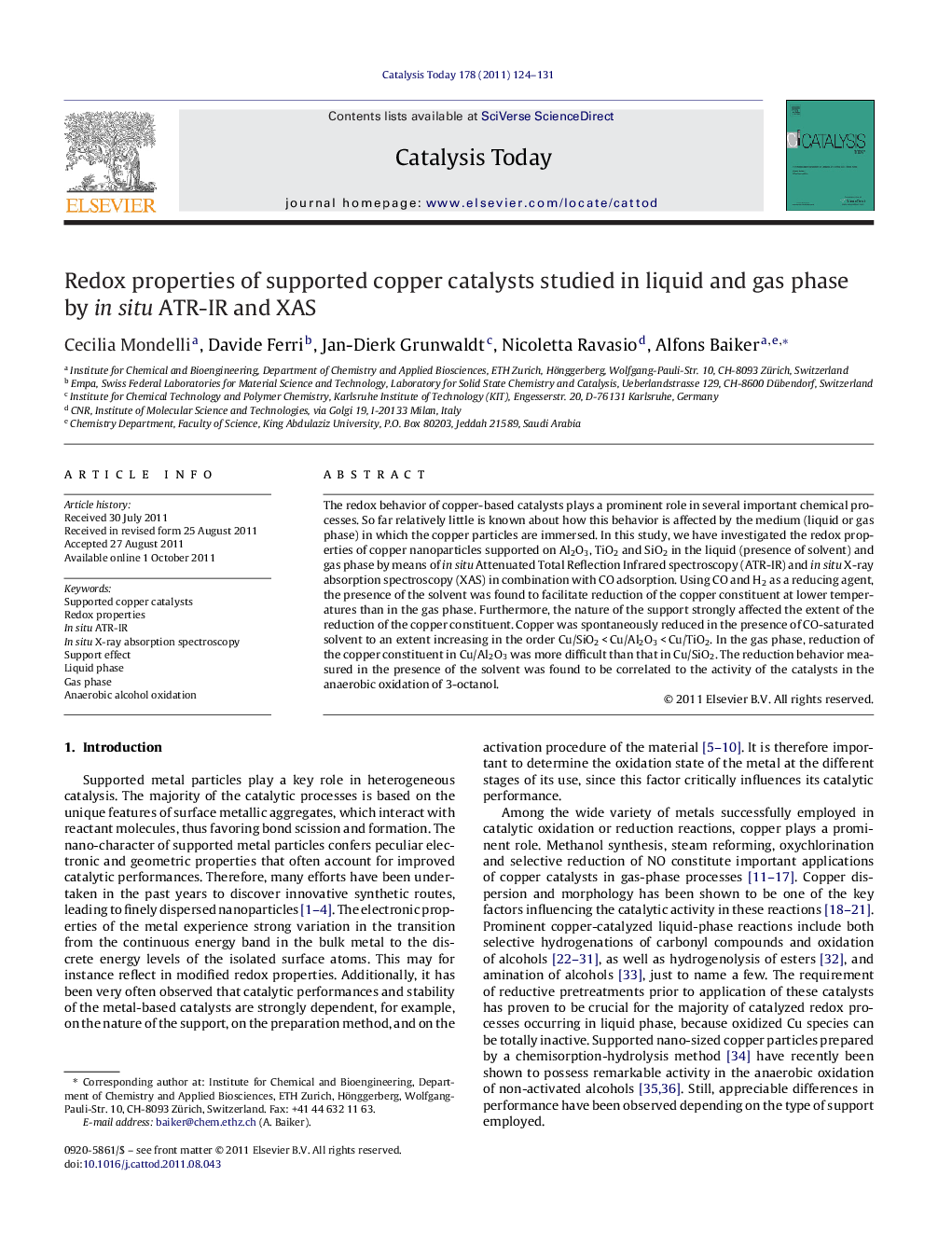| Article ID | Journal | Published Year | Pages | File Type |
|---|---|---|---|---|
| 55650 | Catalysis Today | 2011 | 8 Pages |
The redox behavior of copper-based catalysts plays a prominent role in several important chemical processes. So far relatively little is known about how this behavior is affected by the medium (liquid or gas phase) in which the copper particles are immersed. In this study, we have investigated the redox properties of copper nanoparticles supported on Al2O3, TiO2 and SiO2 in the liquid (presence of solvent) and gas phase by means of in situ Attenuated Total Reflection Infrared spectroscopy (ATR-IR) and in situ X-ray absorption spectroscopy (XAS) in combination with CO adsorption. Using CO and H2 as a reducing agent, the presence of the solvent was found to facilitate reduction of the copper constituent at lower temperatures than in the gas phase. Furthermore, the nature of the support strongly affected the extent of the reduction of the copper constituent. Copper was spontaneously reduced in the presence of CO-saturated solvent to an extent increasing in the order Cu/SiO2 < Cu/Al2O3 < Cu/TiO2. In the gas phase, reduction of the copper constituent in Cu/Al2O3 was more difficult than that in Cu/SiO2. The reduction behavior measured in the presence of the solvent was found to be correlated to the activity of the catalysts in the anaerobic oxidation of 3-octanol.
Graphical abstractFigure optionsDownload full-size imageDownload high-quality image (347 K)Download as PowerPoint slideHighlights► Redox behavior in liquid and gas phase of differently supported Cu particles has been investigated ► In situ ATR-IR and XAS in combination with CO adsorption were applied. ► Redox behavior is different in liquid (solvent) or gas phase. ► Correlation between redox behavior and catalytic activity must account for this discrepancy.
